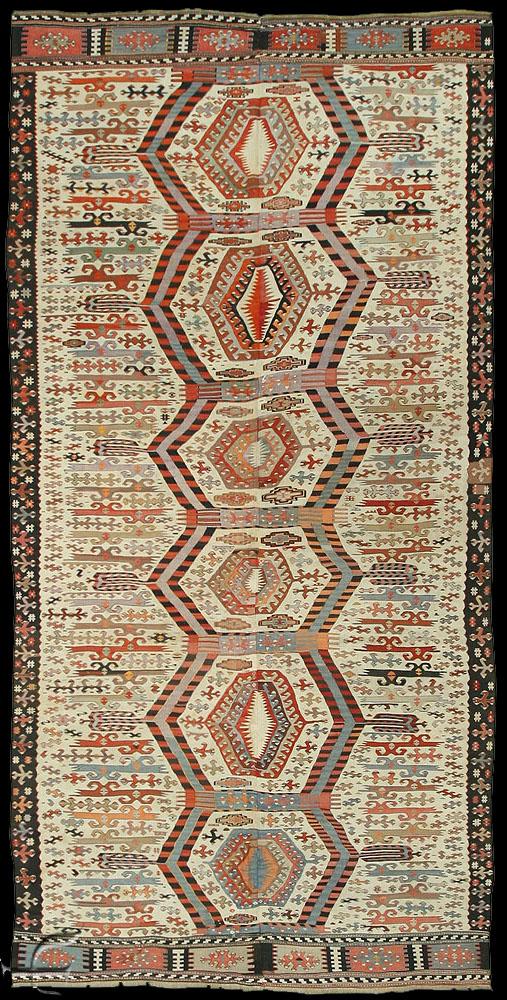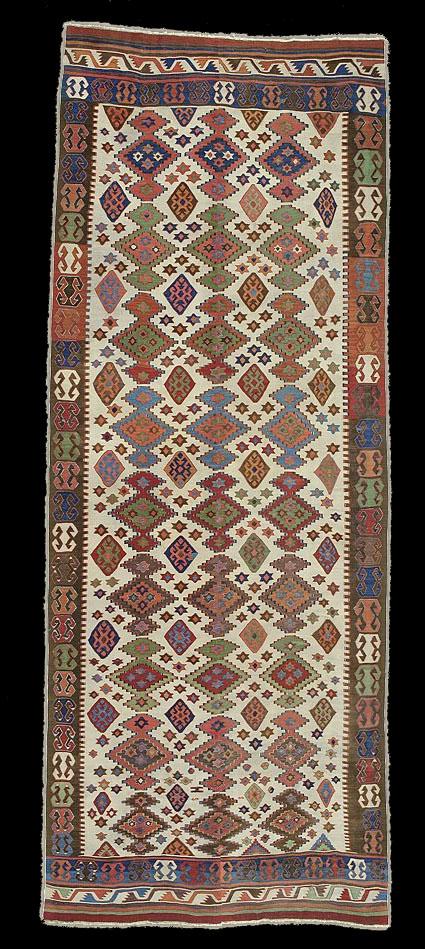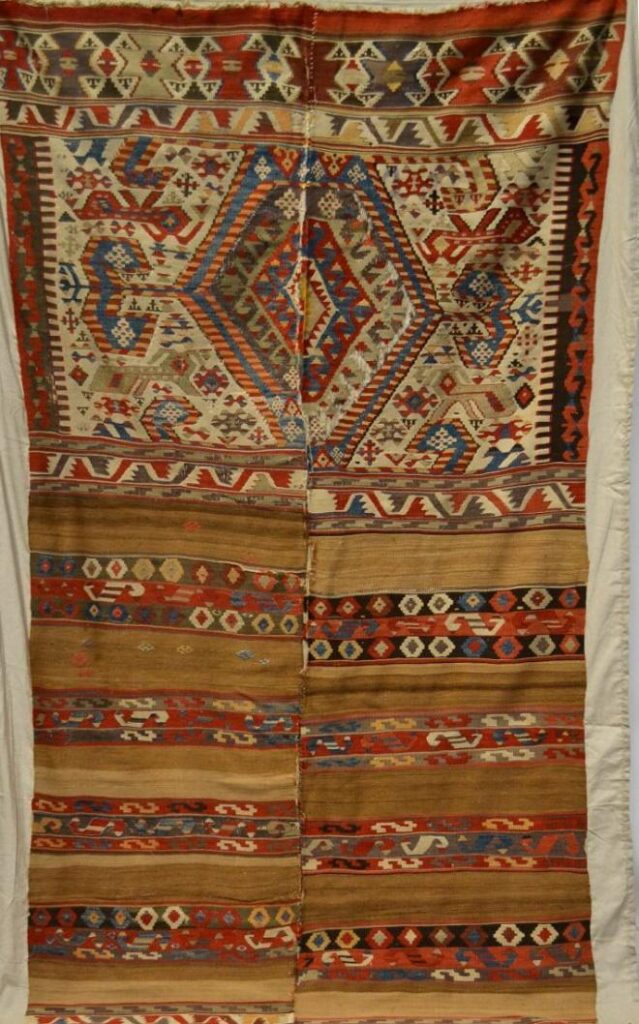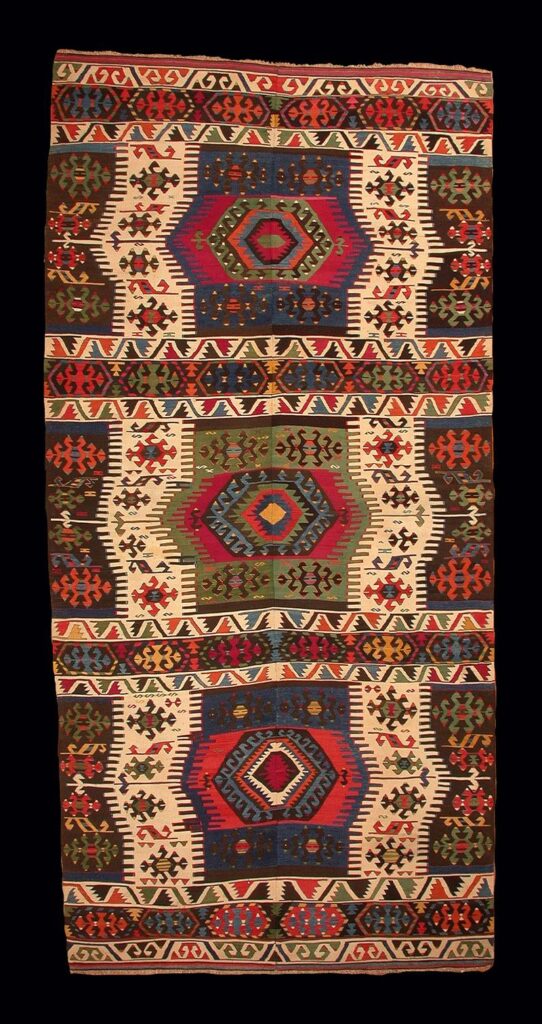Aydin Kilims
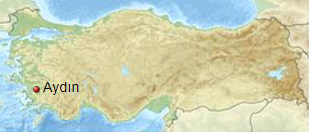
Aydin (ancient Greek Tralles) is a city in and the seat of Aydin Province in Turkey’s Aegean Region. The city is located at the heart of the lower valley of Büyük Menderes River (ancient Meander River). At first, the city was named Güzelhisar by Turks. Taken over by the Aydinid Dynasty, ultimately it was named after them Aydin.
Roman mosaics of Tralles kept in the Aydin museum share some features and total bordered structure with carpets. Since the 18th century, the city is considered a source for tribal kilims and jijims.
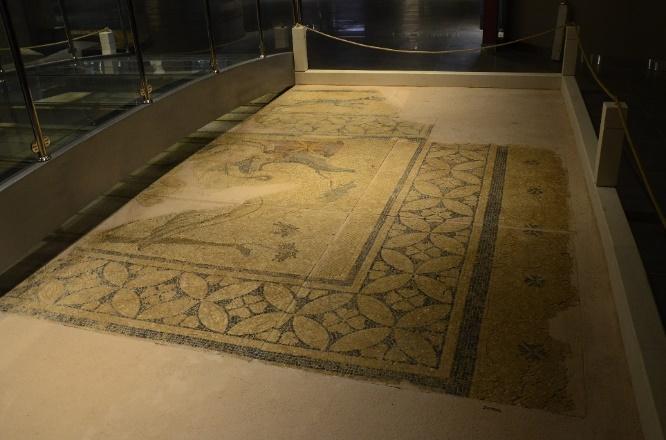
Today the mass production branded as Aydin are tribal kilims woven in the province. There are also antique piled rugs woven in Aydin, nevertheless it is famous for its flat-woven pieces.
Technical aspects and the structure of Aydin kilims
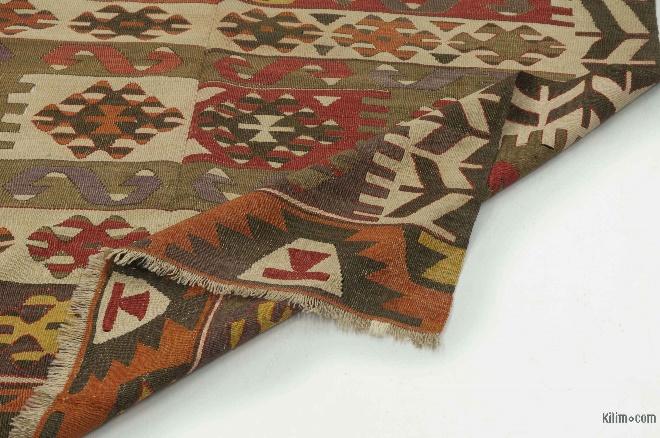
Anatolian kilims are normally woven in double pieces. Here in Aydin lots of kilims are woven in three pieces, a central one with two edge strips. Jijims (cicims), for which Aydin is also famous, have a similar structure. These are narrow warp-faced flat-woven pieces sewn together.
Aydin kilims are completely woolen. Here, kilims are woven in rug sizes, including prayers and area rugs. Generally the formats are rather long. Runners are common too.
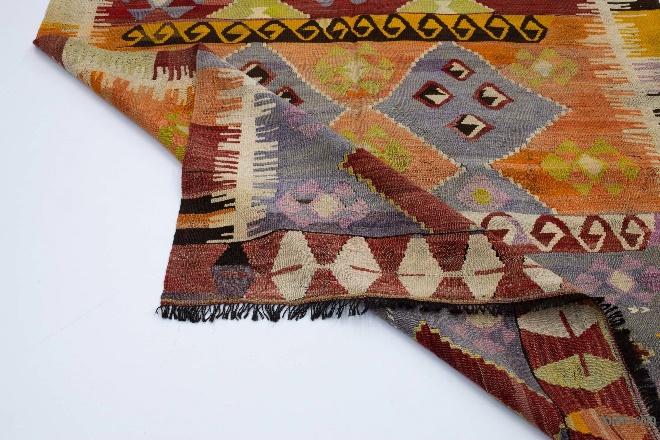
Dyeing and painting of Aydin kilims
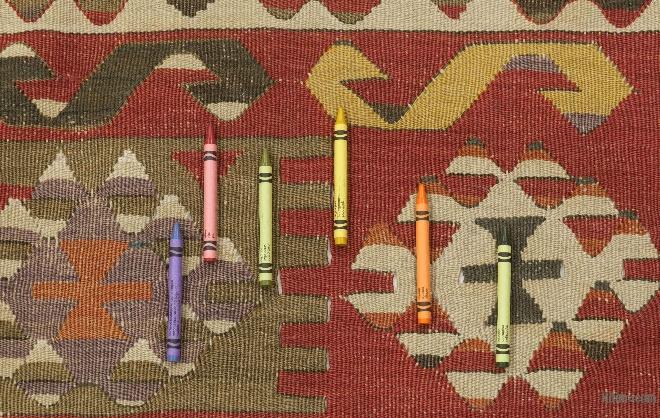
Aydin’s palette is truly multi-colored. Among Aydin pieces one could find the most unexpected color combinations like pieces dominated by purplish shades such as lilac.

Ivory or pale pinks are visible in the fields. Burgundy and brick reds are dominant in some pieces. Dark and light shades of blue and green have important role next to red and earthy shades. In some antique pieces mustard, gold and brown are dominant.
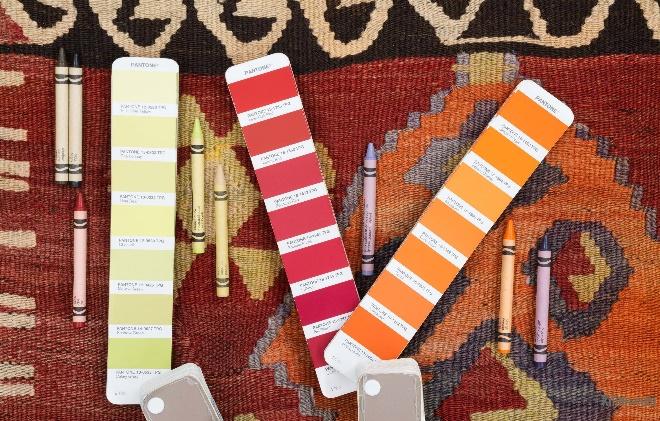
Aydin secondary palette consisted of yellows, pinks, oranges, violets, brown, etc. These dyes are completely vegetable and mineral-obtained.
Designs and patterns of the Aydin kilims
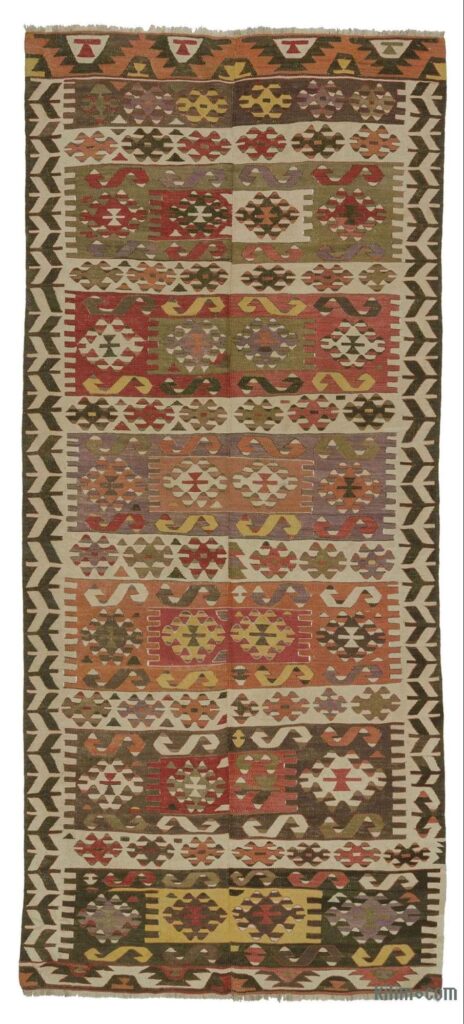
Pole medallions are the most common designs used in Aydin kilims. These so-called medallions are a row of large hexagons, filled with colorful motifs. Aydin borders at the ends are followed by colored stripes and a single row of weft twining. Prayer kilims are usually designed in Aydin with a tree of life within the mihrabs (under the arch or niche).
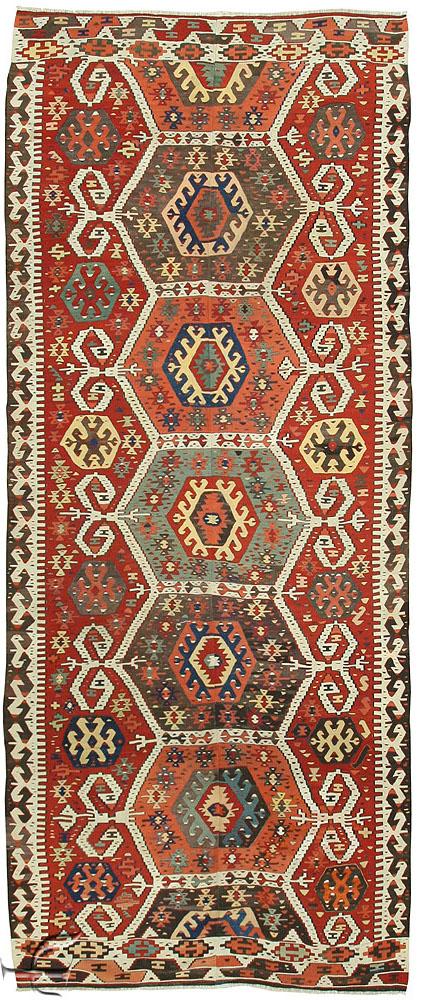
You can find almost all Anatolian motifs in Aydin kilims. These may include hooks, ram’s horns, amulets, stars, cross, Yin and Yong, fetter, etc.
Küpe (Turkish for earring), for example, is a beloved motif in Aydin. A kind design, common in Aydin, is made with concentric dented lozenges and an earring motif in the center of each. Earrings are common wedding gifts and earring motifs symbolize marriage in Anatolian nomadic cultures.
